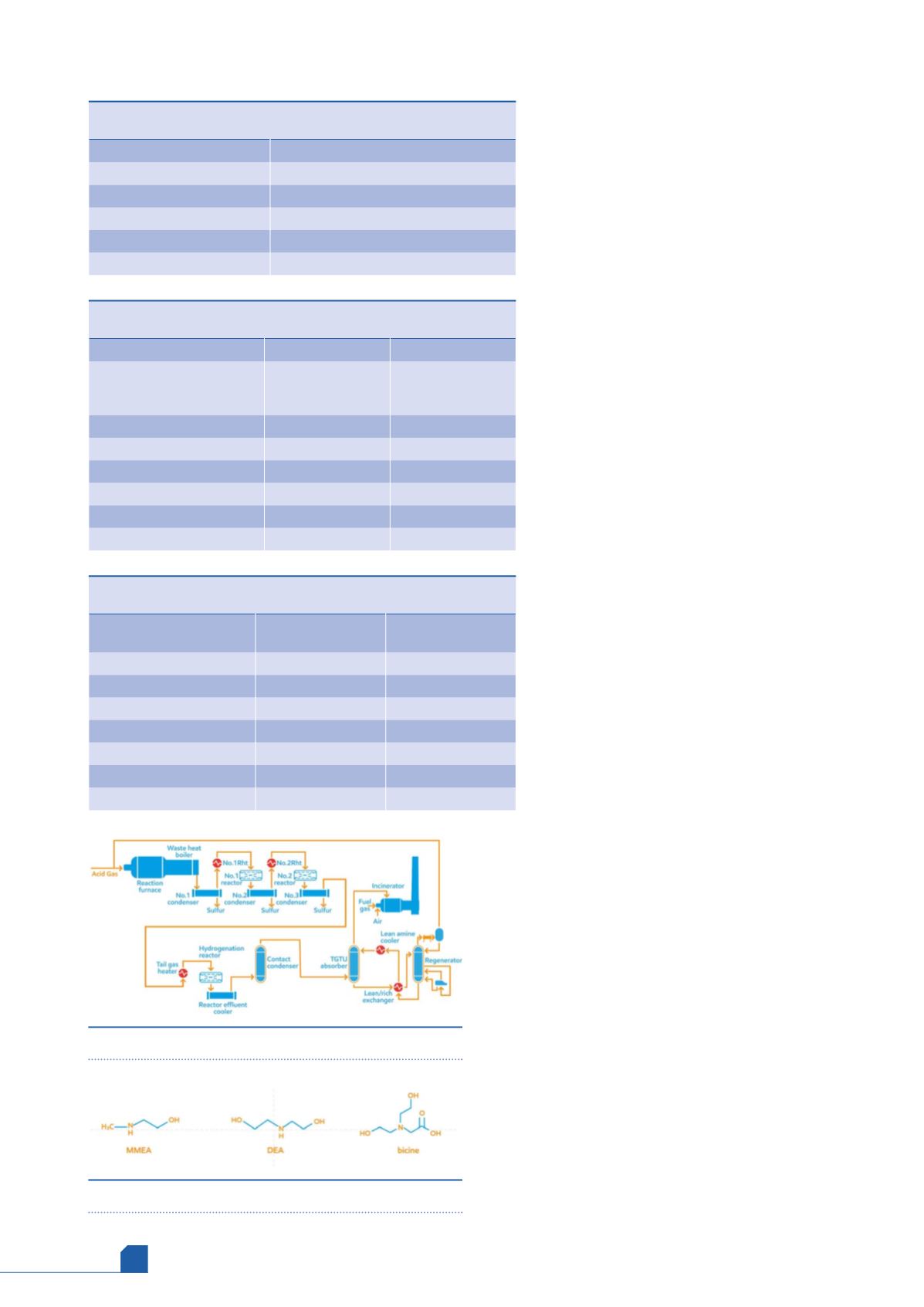
August
2019
HYDROCARBON
ENGINEERING
30
During the late 1970s, amine reagents such as
diisopropanolamine (DIPA) and MDEA emerged as
selective H
2
S treating solvents. When applied to
TGTUs, these solvents improved SRE to greater
than 99.5%. Of these two amines, MDEA is more
widely used, as DIPA never gained wide
acceptance due to its lower selectivity for H
2
S
and its greater propensity to degrade.
During the 1980s, Exxon Research and
Engineering developed a class of compounds
known as sterically-hindered amines from which
evolved into FLEXSORB SE and SE Plus
technology. These solvents provided several
benefits over MDEA, including the ability to
achieve lower H
2
S specifications with greater
absorption capacity, as well as lower energy
consumption and improved solvent stability.
As tighter emission standards are adopted
around the world, there has been growing
interest in the use of FLEXSORB SE/SE Plus and
the next generation of sterically hindered amine
to meet the new environmental regulations. As
more SRUs are being designed or modified for
higher sulfur recovery, many are now targeting
the World Bank Standard of 150 mg
3
/Nm
3
SO
2
(approximately 99.98%+ SRE).
2,3
In certain regions,
emission targets of less than 100 mg/Nm
3
are
now in place (Table 1).
For over 35 years, the choice of solvent for
meeting low H
2
S target in TGTUs has been
between MDEA and sterically-hindered amines.
While MDEA has been widely used and meets
most treating requirements, FLEXSORB SE/SE
Plus has been selected primarily because it can
lower total life cycle project costs and is able to
meet H
2
S specifications even under high
operating temperatures. This solvent has been
used to debottleneck existing SRU/TGTUs at
ExxonMobil and licensee’s facilities worldwide. It
has also been deployed in both small scale sulfur
units as well as in some of the world’s largest gas
processing facilities located in the Middle East. In certain
applications, the technology meets less than 10 ppmv H
2
S
in the absorber overhead or about 99.99%+ SRE.
The following sections provide ExxonMobil’s operating
experience with MDEA and SE/SE Plus units. Data will
compare the stability of the solvents and the long-term
performance of the two technologies.
Case histories and comparisons
Case 1
A TGTU had been operating for a number of years with
MDEA and analysis showed a number of impurities had
accumulated in the solvent. Impurities included
degradation products such as diethanolamine (DEA),
monomethylethanolamine (MMEA), as well as heat stable
salts (HSS) and bicine, an amino acid derivative of MDEA.
In order to prevent excessive HSS build-up and the
consequences of corrosion due to the accumulation of
Figure 1.
Typical SRU complex highlighting the TGTU.
Figure 2.
Typical MDEA impurities.
Table 1.
Common sulfur recovery efficiencies around the
world
Approximate sulfur recovery efficiency
USA
~ 99.92% (250 mg/Nm
3
SO
2
)
Europe
99.5% to 99.9%
Middle East
~ 99.9% (500 mg/Nm
3
SO
2
)
World Bank standard (refining)
~ 99.98% (150 mg/Nm
3
SO
2
)
China
~ 99.98%+ (100 mg/Nm
3
SO
2
)
Table 2.
Comparison of aged MDEA and FLEXSORB™ SE TGTU
Aged MDEA
FLEXSORB SE
Amine concentration (wt%)
40 wt% MDEA
5 wt% DEA
2 wt% MMEA
---
Reboiler duty
X
34% of X
Steam rate
X
33% of X
Circulation rate
X
35% of X
CO
2
slip (%)
76
93
H
2
S in treated gas (vppm)
<50
<10
H
2
S in acid gas recycle (mol%)
19
33
Table 3.
Comparison of FLEXSORB SE performance – fresh vs
aged solvent
FLEXSORB SE
(2010 data)
FLEXSORB SE
(2018 data)
Feed gas rate
X
109% of X
Lean amine (˚F)
85
115
Circulation rate
X
X
Steam rate
X
114% of X
% H
2
S in the acid gas recycle
71.8
69
H
2
S in treated amine (vppm)
90
<50
CO
2
slip (%)
90
88








